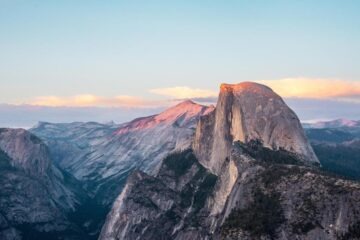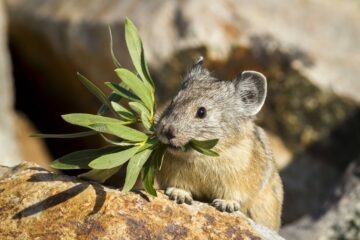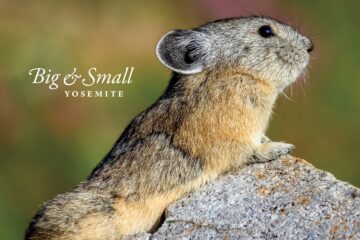In mid-March, Cory Goehring joined the Conservancy team as our lead naturalist, after over a decade of living, working and learning in Yosemite. Just five days after his official start date, the park closed to the public temporarily, to protect visitors, staff and residents as the coronavirus (COVID-19) pandemic took hold in California and across the country.
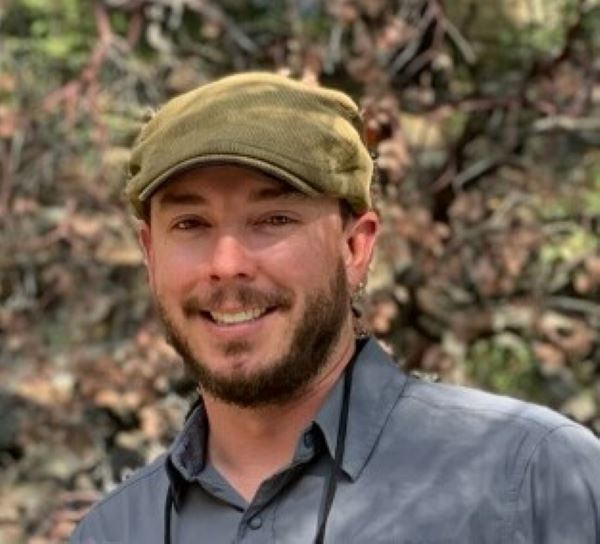
Cory Goehring joined Yosemite Conservancy as lead naturalist in March 2020.
Cory lives in the park and plays a key part in our Outdoor Adventure and Custom Adventure programs — but with Yosemite closed and our programs canceled for the spring, he leapt into action in front of the camera, sharing insights on snow plants, lichen and lupine; leading virtual nature walks; and offering glimpses of life in the suddenly quiet park.
Once Yosemite reopened in mid-June, our adventures started up again, with special health precautions in place. Cory’s thrilled to be able to get back out on the trail to help people learn about the park (while staying a safe distance apart).
As he was getting started this spring, we asked Cory a few questions about exploring ecology in Yosemite, what to look out for at different times of year, and why it’s worth getting to know the natural world. A short article based on this Q-and-A appeared in our May 2020 magazine.
Q: How did you end up becoming a professional naturalist?
A: I grew up in rural Arkansas and lived on 40 acres of land with my parents. We had no running water or electricity for the first three years of my life. My mother and my father are students of the natural world and instilled in me a deep appreciation for the outdoors. We were always hiking, camping and fishing.
I wasn’t always so excited to be outside, especially when I was little. My mother loves to tell the story of the time when, at age three, sat down on the trail, crossed my hands and legs, and said, “When I grow up I’m never going to hike! I’m going to live in the city!” Eighteen years later, I moved into a canvas tent cabin in Yosemite Valley’s Curry Village, and never looked back. It was then, when I moved to Yosemite, that I found my sense of place as a naturalist. I believe we all have the potential to connect to the natural world, we just need to find the thing that brings out our inner naturalist.
Q: What makes Yosemite a good place to explore ecology?
A: Yosemite supports five life zones and more than 1,400 species, all within the framework of some of the most stunning landscapes the world has to offer. What’s not to love? You could spend hours exploring a single meadow, or dedicate a day to hiking up to Yosemite’s “sky islands,” keeping an eye out for the resilient plants and animals that dwell at the Sierra Nevada’s high elevations. In the course of an afternoon, you can venture through multiple habitats, from lake shores to pine forests to talus fields. You can explore ecology anywhere on the planet, but Yosemite is in a class of its own.
Q: What signs of seasonal transition do you look for at different times of year?
A: To get a sense of place here in Yosemite, you have to understand its moods. For me, the best way to experience Yosemite’s moods is to pay attention to how nature shifts throughout the seasons. Yosemite is a transitional park, with hot dry summers and cold wet winters.
Spring is Yosemite taking a deep inhale, and exhaling with life. Waterfalls fill with melting snow, and pour life into the meadows. Birds return from their southern nesting sites. Sierra chorus frogs perform their nightly symphonies. (Snow plants, the stars of one of Cory’s “Naturalist Note” videos, are another classic sign of spring in Yosemite.)
As spring fades and temperatures rise, the grasses start to lose their luster. Beautiful flowers called “farewell to spring” (Clarkia amoena) begin to bloom, letting us know that the transition to summer has started. As daylight hours lengthen, people head to higher ground to enjoy cooler air, mountain views and scenic hikes in the Tuolumne area.
By the time fall arrives, many of Yosemite’s waterfalls have slowed to a trickle or stopped altogether. Bright yellow leaves shine on aspen and bigleaf maple trees. As the season’s first snows start to blanket Yosemite, winter preparations take hold. Bears find their dens, adventurers wax their skis, small birds snack on frozen insects and huddle together for warmth. The park’s winter coat adds layers: Ice crashes to the Valley floor. A “snow cone” forms at the base of Yosemite Falls. Small mammals seek shelter in subnivean tunnels.
No matter when you visit the park, take time to tune your senses into your surroundings. Can you feel the seasonal moods?
Q: Why do you think it’s important for people to spend time learning about and observing the natural world?
A: Humans are intricately connected to the natural world. Spending time in nature has a significant positive impact our mental health, stress levels, short-term memory, and ability to retain information. Getting outside is a great way to rekindle our deep-rooted connection to the natural world.
Q: What are some of the benefits of experiencing Yosemite’s ecosystems with a naturalist?
A: There’s a saying here in Yosemite: “The more you know, the more you see.” With a naturalist by your side, you can gain a deeper understanding of your surroundings. Yosemite is impressive on its own, but with a naturalist you can ask the “What? When? Where? And why?” That act of leaning into your curiosity can, in turn, foster a greater sense of place.
Q: Since your residence is within the park, you were in Yosemite while it was temporarily closed this spring. What are some of the changes you noticed in the natural world during that time?
A: Being in Yosemite during the closure was a special experience. The best way I can describe it is in musical terms. It was as if the conductor got on stage and tapped the baton, and the orchestra began to play, but no one was around to hear the melody. And in the absence of an audience, the music seemed louder than usual. It was a different song, its notes more clear, its rhythm uninterrupted.
The normal buzz of Yosemite Valley was hushed, making way for other sounds. Bird song seemed to echo off the walls, waterfalls cracked and boomed. Animals regularly meandered across normally car-filled roads; I could imagine them thinking, “Where is everyone?” Bears and their young cubs looked for food in lush meadows rather than in busy campgrounds. Ground squirrels were conspicuously absent from their normal snacking spots, including the back lawn of The Ahwahnee, as they, too, shifted their diets away from human food. Peregrine falcons nested on rock ledges along popular, but suddenly empty, climbing routes. Grasses and wildflowers emerged in informal social trails.
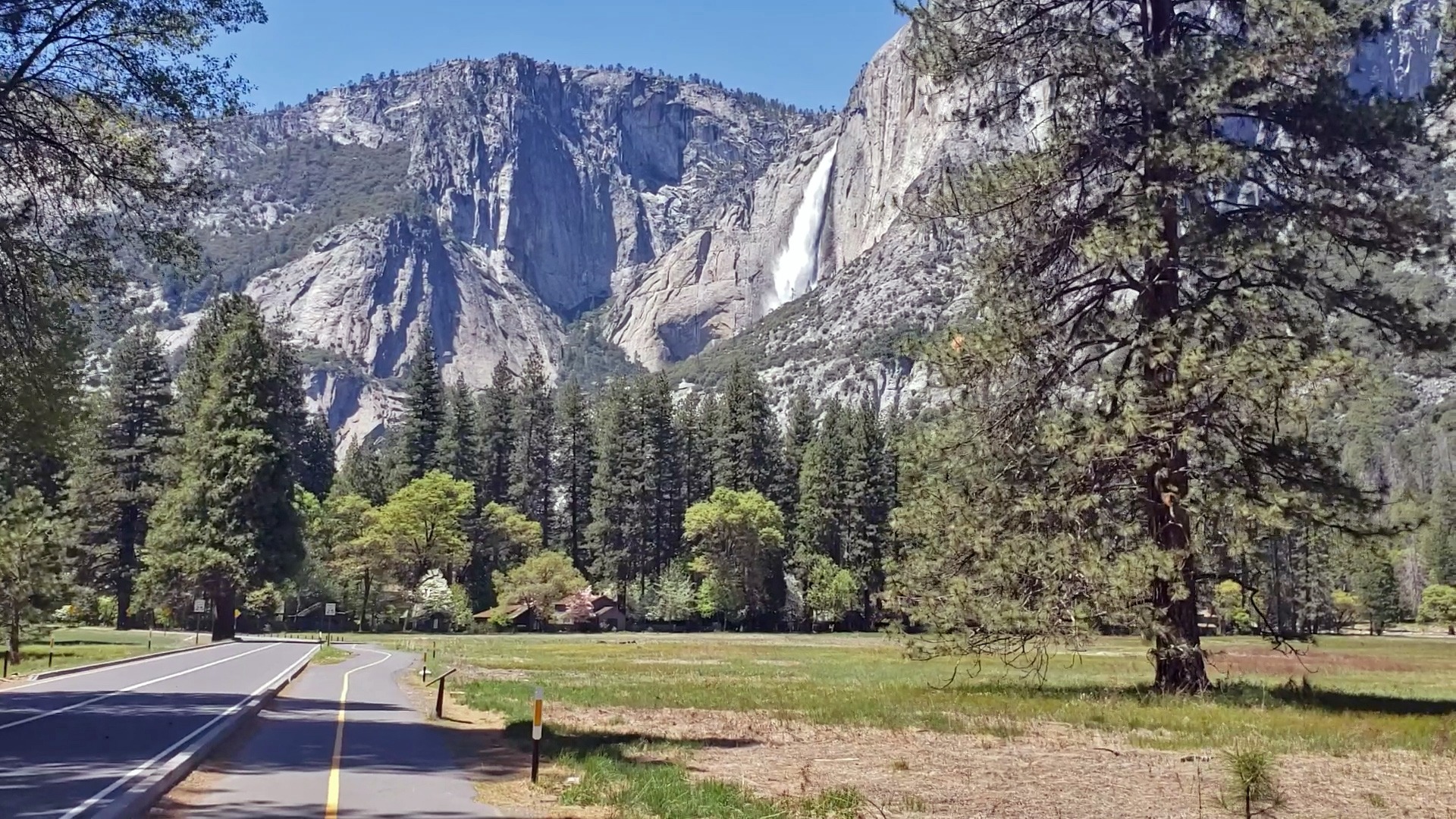
A glimpse of an unusually hushed spring morning in Yosemite Valley, as a temporary park closure left normally bustling roads and bike paths quiet.
As an educator, I was happy to be able to continue communicating about the natural world through videos and other updates, but I missed the experience of being in the park with other people, of hearing their questions and observations and sharing my own. Now that visitors are back, I’m excited to get back to that work — and to keep encouraging people to take care of this place.
Q: Now that you’re on the Conservancy team, what are you looking forward to?
A: I’m looking forward to helping people connect with Yosemite, and to inspiring visitors to be curious about and take care of the natural world! Yosemite means the world to me and I want to share it with everyone. In my 13 years here in the park I have seen first-hand how the Conservancy supports Yosemite and the National Park Service’s mission. It’s the best way I can think of to help share and protect the place that I love so dearly.
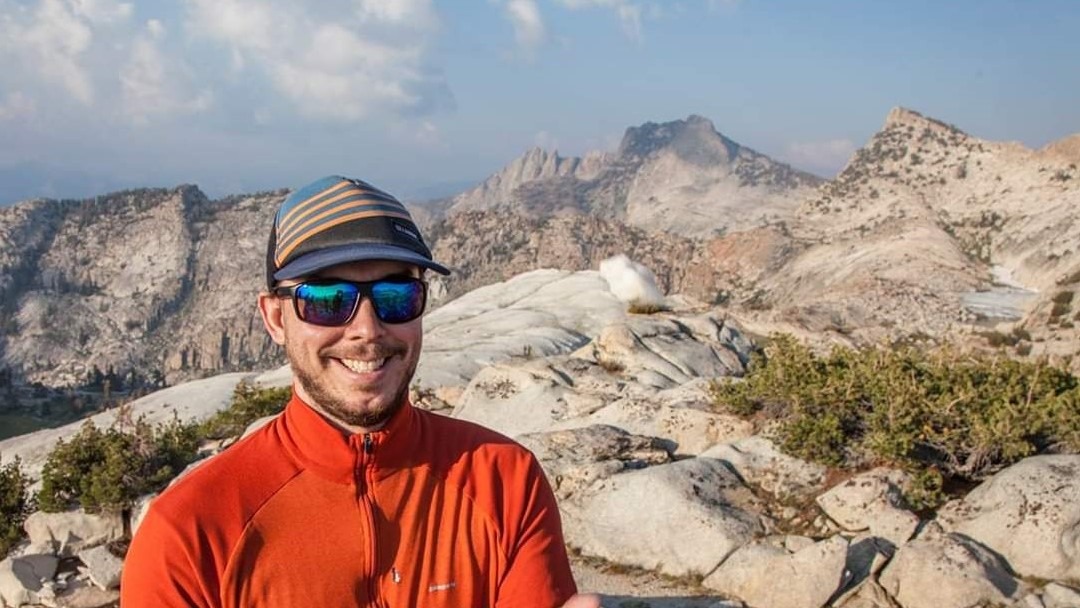
Cory loves hiking and learning in Yosemite, where he found his “sense of place” as a naturalist — and helping people find their own connections to nature.
If you’re interested in experiencing Yosemite with Cory or one of our other naturalist guides, check out our upcoming Outdoor Adventures, or dream up your own itinerary for a Custom Adventure. And whether or not you’re heading to Yosemite, you can learn from Cory online through some of his “Naturalist Note” videos. Follow us on social media and keep an eye on our website for more insights into the natural world from Cory and others this summer!
All photos courtesy of Cory Goehring.

